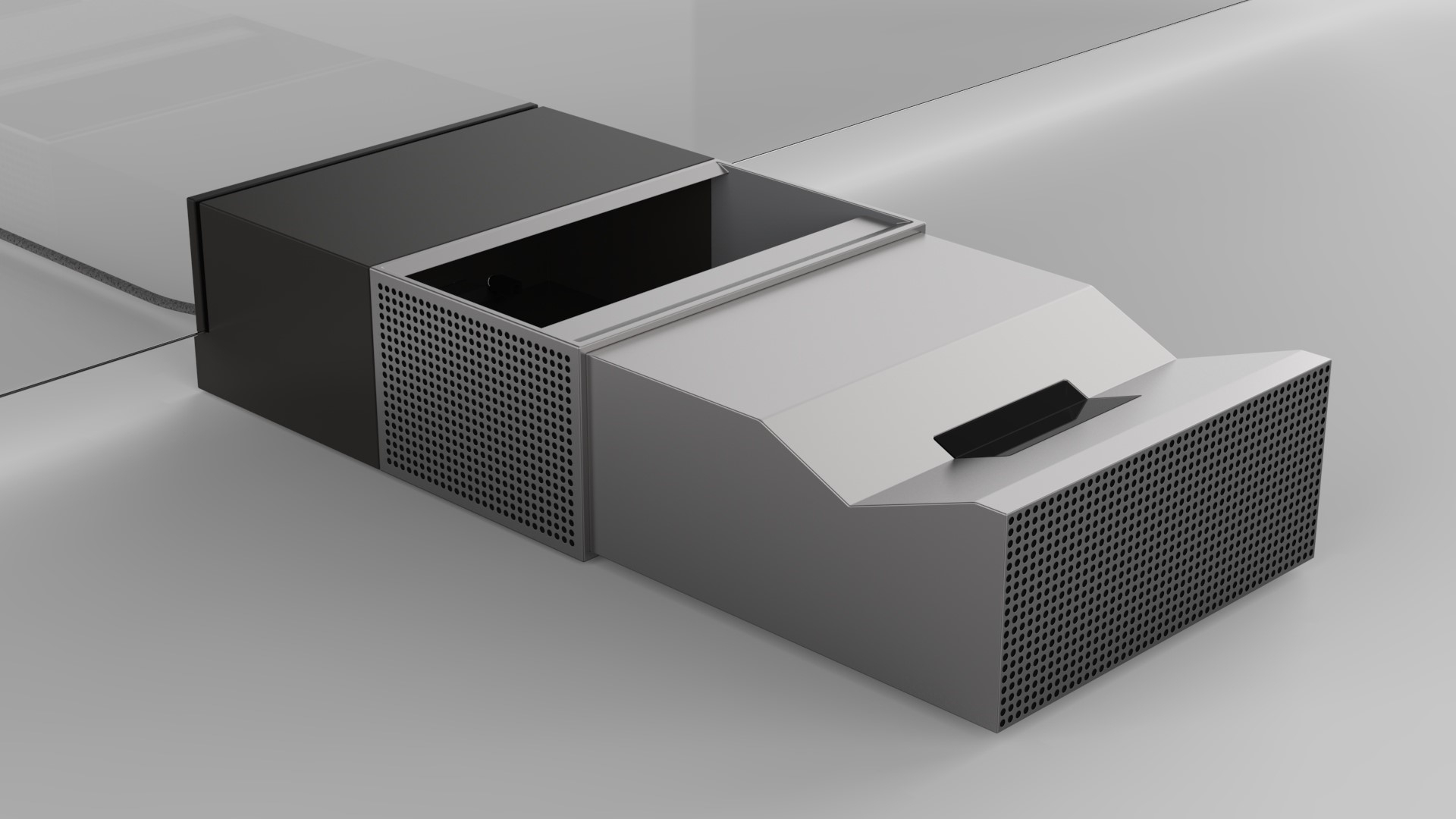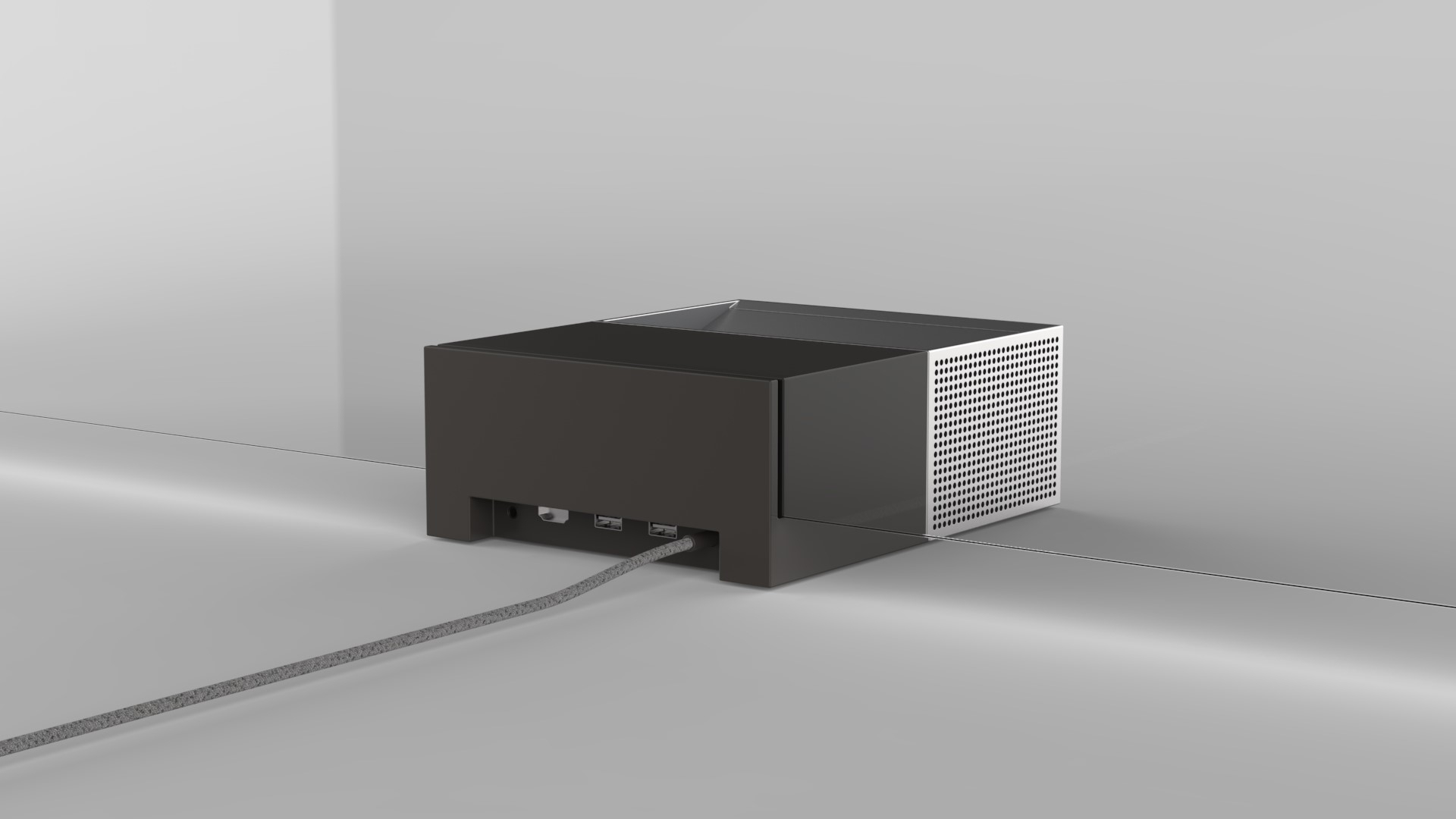A transparent plastic film: That’s how the world’s largest monitor company imagines your next screen
A projector with a screen could be the an innovative way to display content with minimum fuss

The in-house design team at AOC, a subsidiary of the world’s largest monitor manufacturer, TPV Technology, came up with a mockup of an ultra short throw projector with a transparent plastic film (think something akin to Perspex or Plexiglass) as the screen surface.
3D Models of the virtual prototype emerged as the AOC NEXTV was one of the winners at the Red Dot design award in the innovative product category. Members of the jury said that “The use of short throw projection technology in combination with a very compact projector housing has resulted in an innovative, very minimalist home cinema solution with AOC NEXTV”.
The projector itself is housed in a collapsible box with a pair of speakers and a transparent 60-cm screen attached to the housing. The motorized projector module can move closer to the screen to fill its entire surface; the entry description notes that “a transparent plastic film for short-distance projection ensures high contrast and vivid colors in the projected images.”

Your office desk reimagined
The fact that TPV-owned AOC went for such an avantgarde design is an intriguing one: AOC doesn’t do consumer television sets and it doesn’t sell projectors, let alone ultra short throw projectors like the one in the design. It does however produce business monitors, portable monitors, gaming monitors, ergonomic monitors as well as monitors for professionals (photo editing monitors, video editing monitors etc).
Other sister brands within TPV Technology, including Philips, Envision, Agon and Great Wall, could use the design internally but the consumer, home entertainment market would be the primary focus. Ultra short throw projectors have taken the world of large format display by storm thanks to their versatility and ability to operate without significant infrastructural impact.
That said, they remain an expensive proposition because of the technology involved but the technological clout of TPV Technology could change that; remember how expensive the first blu-ray players were? One can envision (pun intended) UST projector modules integrated in standing desks (or office desks) with transparent or translucent panels (to improve privacy).

Other than the issue of pricing, the transparent panel will be the other tricky part and sadly one that may require breaking the laws of physics. A 2mm acrylic sheet (aka Perspex) weighs 2.4Kg per square meter. To keep your transparent surface from wobbling, you’d need something fairly thick, around 4mm, that’s 4.8Kg per square meter. A 60-cm diagonal screen would weigh about 770g: that will need significant support in order to prevent buckling, there’s no way around it. Otherwise, a gust of wind or a clumsy co-worker could send the NEXTV flying. I guess there’s some more design tweaks to be made before we can finally get a working, real life prototype.
Sign up to the TechRadar Pro newsletter to get all the top news, opinion, features and guidance your business needs to succeed!
(By the way, check out this excellent explainer about Ultra short throw projectors from our colleagues at TechRadar).

Désiré has been musing and writing about technology during a career spanning four decades. He dabbled in website builders and web hosting when DHTML and frames were in vogue and started narrating about the impact of technology on society just before the start of the Y2K hysteria at the turn of the last millennium.